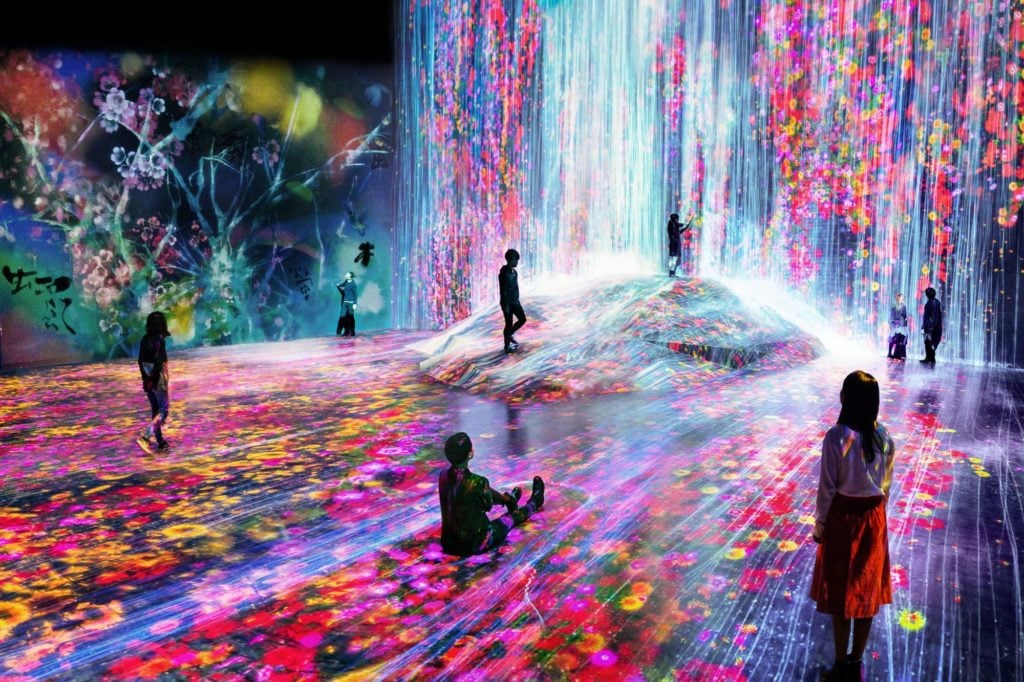Every Monday morning, artnet News brings you The Gray Market. The column decodes important stories from the previous week—and offers unparalleled insight into the inner workings of the art industry in the process.
This week, squinting into an uncertain future…
PACE OF CHANGE
On Tuesday, Pace announced the launch of PaceX, the international mega-gallery’s latest initiative exploring synergies between contemporary art and technology. Given the scarce details available in the announcement, it’s fair to say that, at this point, the project raises far more questions than it answers—and some of those questions are monumental, in the most literal sense.
What do we know about PaceX so far? Mostly, we know its key personnel. Pace CEO Marc Glimcher is the endeavor’s chairman. Christy MacLear, who was last seen heading up Art Agency, Partners’s advisory division for artists’ estates and foundations, is its CEO. Mollie Dent-Brocklehurst, the former president of Pace London, is its co-founder and chief creative officer. And Kathleen Forde, the former creative director of Istanbul’s time-based-media-centric Borusan Contemporary, will be its curator of experiential art.
What will PaceX do, though? A Pace spokesperson declined my inquiry requesting additional details on Thursday, so right now we’re left with nothing but sound bites and speculation.

Pace Gallery president and CEO Marc Glimcher. Photo by Kris Graves, courtesy of Pace Gallery.
When ARTnews (which had the story first) inquired about what types of projects PaceX would pursue, MacLear’s response was, “Bold ones. Projects which match the issues like climate change or social justice that drive artists to new tools and canvases, such as cities or immersive spaces.” To be diplomatic, I will define that answer as “incrementally helpful.”
Forde gave readers at least a little more by emphasizing PaceX’s interest in artwork where the “essential quality” is a “time-based experience with related awareness of its immediate effects on perception. Additionally, it is intended to connect an audience in a larger shared community experience, leading to a democratization of art.”
But the closest PaceX’s leadership has gotten to revealing anything concrete comes courtesy of Glimcher. He has now been publicly teasing wider adoption of paid ticketing for the gallery’s technologically inclined artists for the better part of a year. (He touched on the point in the ARTnews story, a March interview with artnet News’s editor-in-chief Andrew Goldstein, and at last December’s “The Art of Blockchains” conference—an event surreal enough that, by its end, I felt like I must have some rudimentary understanding of what it’s like to microdose LSD.)
Although his comments to ARTnews were more general, the other two cases saw Glimcher delve into specifics. He argued that the gallery system of the 1970s failed to establish an economic model to sustain “phenomenological” and performance-based artists, who, in his cosmology, were doing much of the era’s most important work. As a result, painting, which had been declared dead by the vanguard, clawed its way out of the grave to regain control of the market and the central conversation.
It seems plausible to me that PaceX will be the gallery’s attempt to prevent art history—and more to the point, art-market history—from repeating this mistake. And the organization seems to have its proof of concept on its roster already.
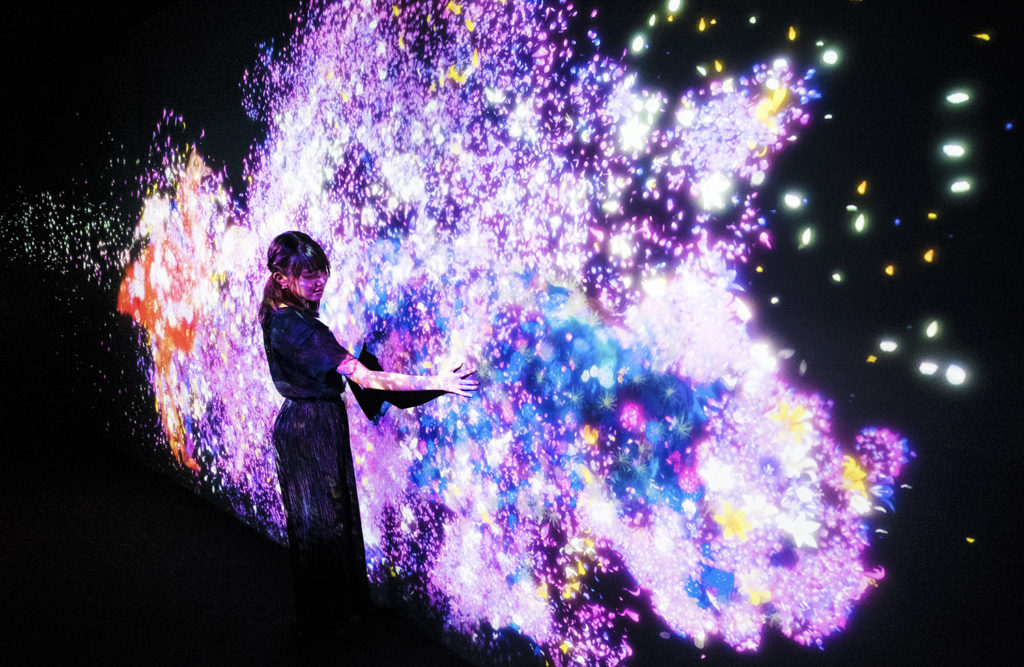
Art from the Digital Art Museum: teamLab Borderless. Photo courtesy of teamLab.
TEAMWORK MAKES THE DREAM WORK
Back in 2014, Pace began working with teamLab, the Tokyo-based, over-600-people-strong digital-art collective. Today, teamLab is best known for creating site-specific, 360-degree, software-driven spectaculars, most of which funnel kinetic (and sometimes interactive) nature imagery through a super-saturated, pleasantly psychedelic color palette.
According to Glimcher, teamLab generates about 90 percent of its revenue from ticket sales, versus only about 10 percent from sales of artworks. And it stands to reason that most of the works changing hands are the type Pace frequently shows at art fairs: those contained within individual, domestically sized screens.
teamLab’s ticketing business appears to be thriving. In the earlier-mentioned interview with Goldstein, Glimcher confirmed that the collective sold roughly half a million tickets, at $20 each, across shows held at Pace’s locations in Beijing, London, and Palo Alto. Earlier this month, teamLab also claimed that its permanent museum in Tokyo, called teamLab Borderless, had sold 2.3 million tickets, at the equivalent of $30 a pop, in its opening year—and in the process, snatched the title of the most-visited single-artist museum on the planet.
Obviously, that would make teamLab a multimillion-dollar-per-year business even if it never sold a single artwork to a private collector or institution. And the collective isn’t even the only one in Pace’s stable that has been able to print money by selling tickets to a one-time-only audience.

MoMA PS1 presented Random International’s Rain Room in 2013 as a major component of “EXPO 1: New York.” (TIMOTHY CLARY/AFP/Getty Images)
Random International, which Pace describes as an “art group” that “runs a collaborative studio for experimental practice in contemporary art,” had its first show at the gallery in 2016. The outfit is best known for Rain Room, a 1,000-square-foot-plus indoor installation in which an actual deluge of water falls constantly… except on visitors, no matter where they stand or walk in the space.
Rain Room was an instant hit in every major city in which it appeared; at the Los Angeles County Museum of Art in 2015, it sold over 190,000 tickets during its initial 15-month run. Another edition of the work moved 20,000 tickets at $30 each just days after its launch in Melbourne earlier this month, according to the Guardian.
Given these results, I think it’s safe to assume that charging admission for at least some of its projects will be a part of PaceX’s platform. And I also know from drifting around the art world over the past several years that Glimcher isn’t the only one who sees this tactic as genuinely disruptive, and potentially transformative for the careers of artists specializing in time-based or interactive media.
Do I think it’s a bad thing for galleries to sell tickets for these kinds of exhibitions? Definitely not. But we should be clear about the limits of, and incentives for, the strategy, too.
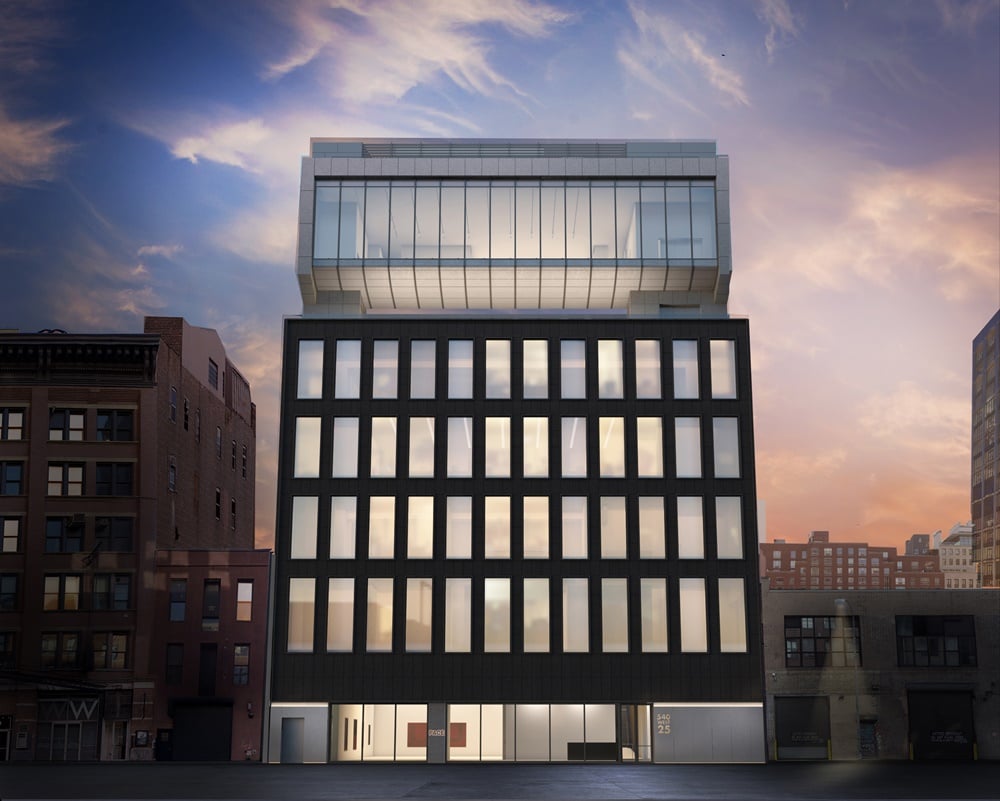
Rendering of Pace Gallery’s new headquarters at 540 West 25th Street, New York. Image courtesy of Bonetti /Kozerski Architecture.
MASS EFFECT
Time-based media work is notoriously tough to sell even in its most familiar forms (film and video). The degree of difficulty only rises when sellers and buyers alike have to grapple with more advanced technology, which is inherently in flux and will inevitably become obsolete—possibly sooner than anyone involved realizes or wants to acknowledge.
Paid tickets stiff-arm that problem by monetizing a temporary experience of the work rather than its permanent ownership and long-term maintenance. In that sense, they are an unqualified good for some specialists in these sales-challenged avenues.
However, “some” is the key word here. In all likelihood, the ticketed model is only a solution for a narrow tranche of artists.
Selling tickets attempts to transform the viewing experience into a mass-market proposition—something that the commercial gallery world has long frowned upon. As Glimcher acknowledged in his interview with Goldstein:
The disruption always at first looks like the art form is being debased. But we have to follow the artists, and if they want to go out and connect to a mass audience, that does not debase their work. If you try to create sacred objects and have them connect to a mass audience, that might be riskier in terms of debasing the work—just look at some of the stories of artists’ overproduction and so forth.
This rationale begs an obvious question: What kind of content are artists, producers, and distributors incentivized to gravitate toward when pursuing a mass audience?
Although there are exceptions, the answer across art forms has generally been “bombastic, high production-value crowd-pleasers,” not works that rely on introspection or nuance—let alone that challenge any status quo beyond the technical.
Now, I would never argue that legitimately great (or at least interesting) works can’t also appeal to a wide audience, or that anyone should ever be embarrassed about enjoying simple (or even straight-up trashy) pleasures. But I do feel comfortable saying it’s an exceedingly rare achievement for something to be both artistically great and popular, even when the work in question doesn’t need to cross international borders to achieve scale.
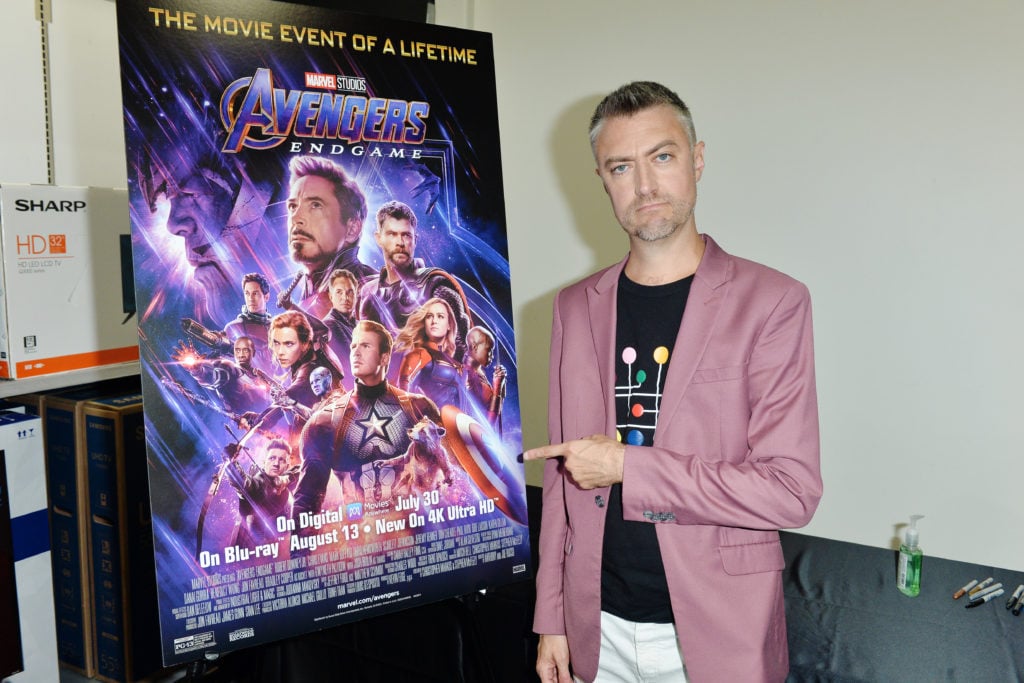
Actor Sean Gunn with a poster for Marvel’s Avengers: Endgame. (Photo by Jerod Harris/Getty Images)
Other media drive home this point. According to Box Office Mojo’s year-to-date figures, 2019’s top five feature films by gross ticket sales worldwide are all either comic-book adaptations (Avengers: Endgame, Captain Marvel, and Spider-Man: Far From Home) or Disney remakes (The Lion King and Aladdin).
Results are even more telling on the small screen. Per Variety, only two of the past year’s top 50 American TV series by total viewership—Game of Thrones (#4) and The Walking Dead (#44)—could even liberally be considered “prestige TV.” The rest of the list is a slaughterhouse of elevated taste led by NFL Sunday Night Football, nerd-bashing network sitcom The Big Bang Theory, and military-crime procedural NCIS. Oh, and after Game of Thrones, the top five is rounded out by Young Sheldon, which, for the uninitiated, is a spinoff of… The Big Bang Theory.
What about in the traditional art world, though? A glance at the Art Newspaper’s most recent annual museum-attendance survey would seem to balance the scales a bit, with the Met’s “Heavenly Bodies” fashion show and Michelangelo taking the top slots. But the picture gets more unsettling if you broaden the scope of the inquiry. As my colleague Ben Davis noted in part one of his far-reaching “State of the Culture” series, Instagram said at the end of 2017 that the Museum of Ice Cream “was the 10th most photographed museum in the world, already in the same league as the Louvre, the Metropolitan Museum, and the Los Angeles County Museum of Art; the Mona Lisa on the same level as a pool filled with plastic ice cream toppings.”
If you missed it, the Museum of Ice Cream also closed a round of investment this past week that valued the company at $200 million. This, too, is the “democratization of art” in action.
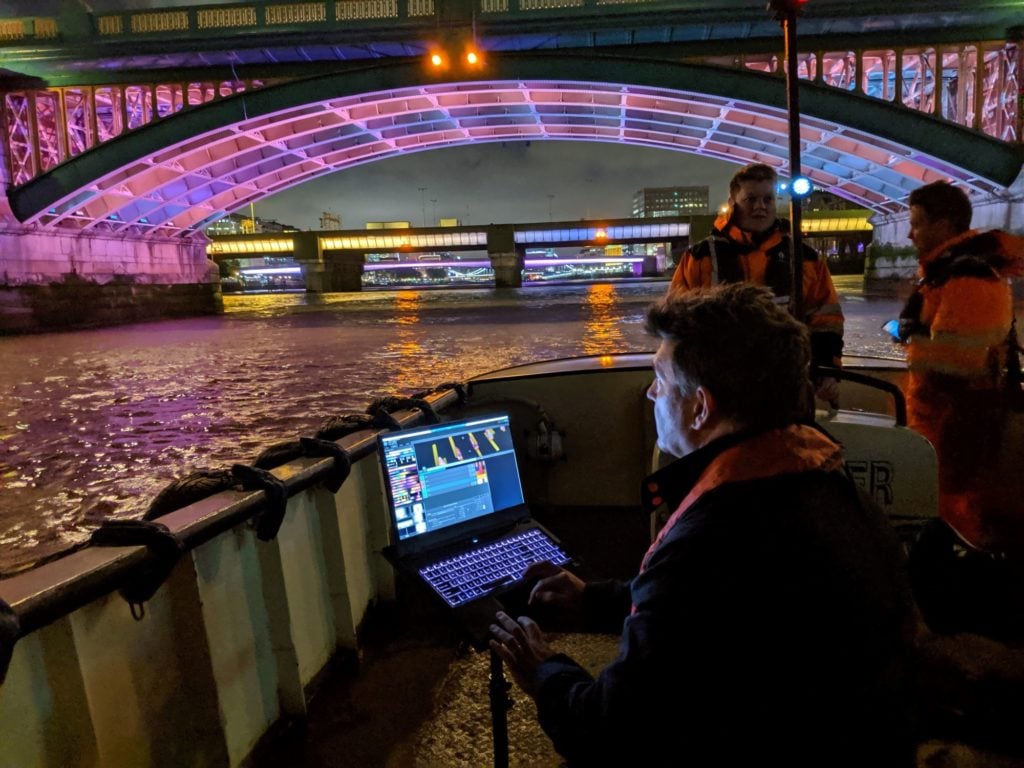
Pace artist Leo Villareal working on Illuminated River. Copyright Illuminated River.
COMMON DENOMINATOR
To be clear, I’m not necessarily saying that teamLab is the Big Bang Theory of time-based media, or that Pace is the Disney of contemporary galleries. And even the harshest critic would be hard-pressed to conflate PaceX with the Museum of Ice Cream. However, I do think it’s noteworthy that most, if not all, of the Pace artists who look primed for PaceX projects have a tendency to go big and spectacular with their work.
Aside from teamLab and Random International, Leo Villareal is out here lighting up bridges, Studio Drift is levitating cement monoliths, and Michal Rovner is no stranger to dominating a gallery with a monumental, graphic video installation.
Even the gallery’s godfathers of phenomenological art thrive on monumentality. Robert Irwin, a few weeks away from turning 91, has been warping our perceptions of entire spaces for decades, while James Turrell has spent more than 30 years transforming Roden Crater into a “naked-eye observatory” partly through commissions for Skyspaces and room-commanding light installations.
Although I’d personally argue that stark differences separate Irwin and Turrell (two of my all-time favorites) from teamLab and Random International, Glimcher placed all four in the same lineage during his interview with Goldstein. From a superficial standpoint, I know what he’s saying.
Which is exactly my point: the types of technologically or “experientially” inclined artists who will benefit from ticket sales are the ones whose works can (and often already do) consistently draw crowds with awe-inducing, Instagram-ready visuals, whether they communicate something more revelatory or not.
In my experience, many, if not most, young artists working with technology and time-based media embraced those tools because they either wanted to do, or felt they were only capable of doing, something quieter, weirder, and/or more revolutionary than what would appeal to even the mainstream collecting public—itself already a niche audience—let alone the mainstream public overall.
PaceX is not going to hurt these other artists if it embraces ticket sales in hopes of attracting a mass audience. But it isn’t necessarily going to help them, either. And while there’s nothing wrong with that, it does set distinct limits on the model’s impact. So until we know what other ideas PaceX may have in store, I think it’s fair to conclude that the art market’s future still looks a lot like its recent past.
[artnet News | ARTnews]
That’s all for this week. ‘Til next time, remember: history doesn’t necessarily repeat itself, but it often does rhyme.
